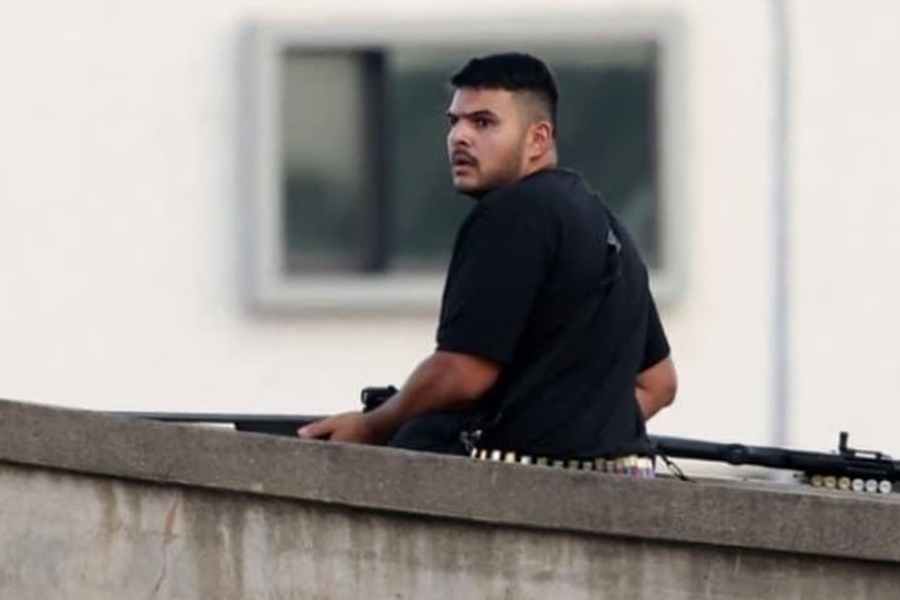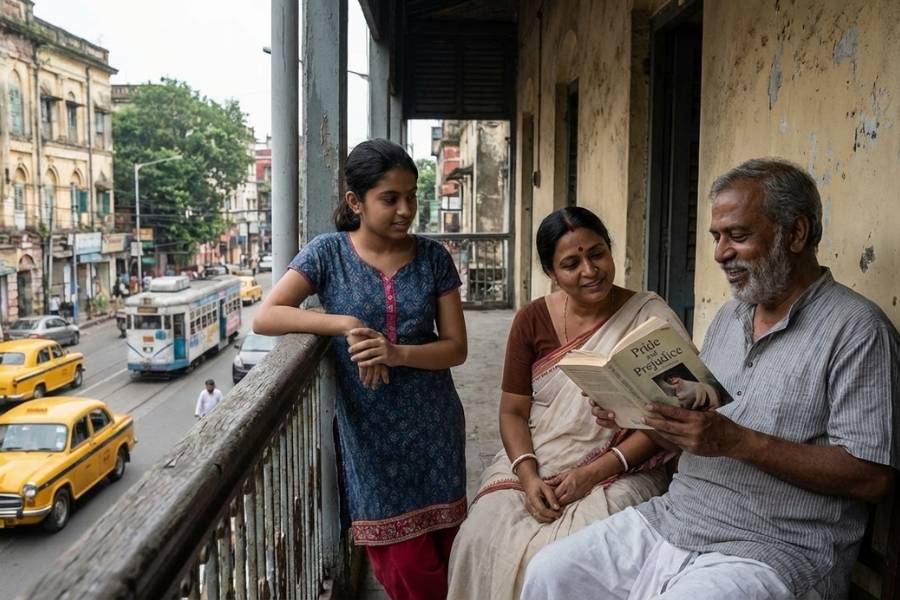 |
| Saradha Bali near Gundicha temple in Puri. Picture by Sarat Patra |
Thousands of devotees flock to Saradha Bali in front of Gundicha temple to catch a glimpse of the divine siblings during the nine-day rath yatra festival.
But many of them are not aware of the tales associated with the place.
Several years ago, there flowed a river between bada deula (main temple) and Gundicha temple called Malini, a tributary of the Bhargavi. Therefore, six chariots were used for the festival, three on each side of the channel, said Abhaya Kumar Naik, who has authored a couple of books on Lord Jagannath.
The idols went to the river by the chariots on that side. They were then carried to the other side over a makeshift bridge and mounted on the set of chariots there.
“Saradha Devi, the wife of then Puri king Gajapati Narasingh Dev, dreamt of Lord Jagannath ordering her to have a single yatra without any pit stop. Consequently, she had the mouth of the river Malini closed and the river was filled with sand. This closed mouth is now called Banki Muhana and since then, the place has been known as Saradha Setu or Saradha Bali,” said Naik.
He said Narendra pokhari, which hosts the Chandan yatra and Athara nala in Puri, were the other major constructions made during the reign of Narasingh Dev.
He referred to texts such as Jagannath Mandir O’ Jagannath Tatwa by Pandit Suryanarayan and Shri Jagannath Padyawali by Kshtrabasi Nayak and Nabanya Nayak. He also said that songs of Bhikari Bal spoke of the significance of the place.
Naik is set to release his latest book titled Saradha Bali that recounts real life incidents of people, who have experienced the miraculous power of the Lord.
“Like one cannot count the sand grains of Saradha Bali, the miracles of the Lord are also innumerable,” said Naik, who is also the registrar of the National Institute of Science Education and Research, Bhubaneswar.
Surendra Mishra, a Sanskrit scholar at Sri Jagannath Sanskrit University, offered a slightly different version.
He said there used to be seven chariots, four on one side and three on the other. The extra chariot used to carry musicians till the Malini river. But the major deviation in his version is that Jagannath would dismount at a location that is now called Saradha Bali because the place where the Lord dismounted became a place of reverence (“shradha” in Sanskrit).
The river was blocked just to make the process easier. He also added that in the 16th century, the buried river started flowing again and Gajapati Ramchanadra Dev, the then king of Puri, ordered it to be filled with sand. Mishra said Rath Nirman Paddhati written in the ninth century, Panchasakha by Balaram Das and a fleeting reference in Madala Panji, could back his claims.
At that time, the Trinity’s journey between the two temples used to last between four and six days.











